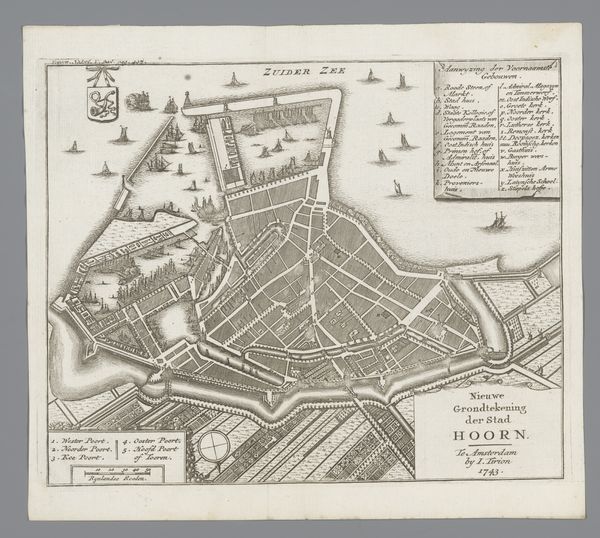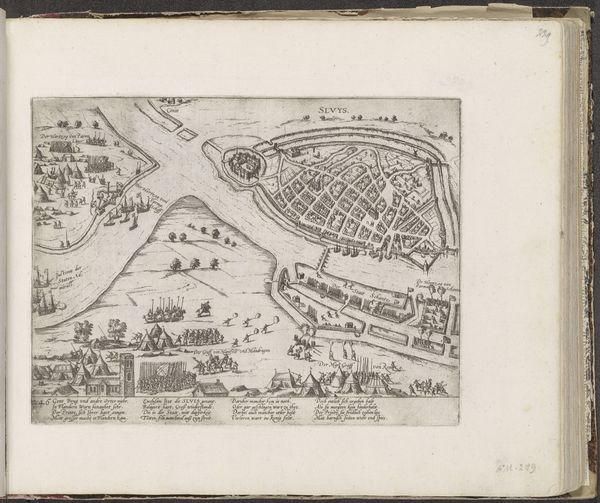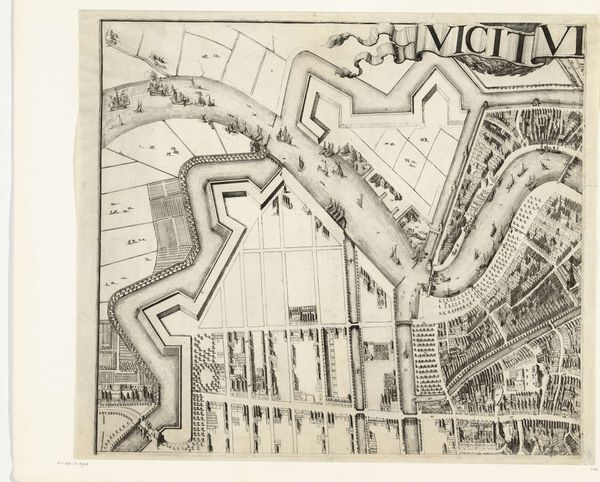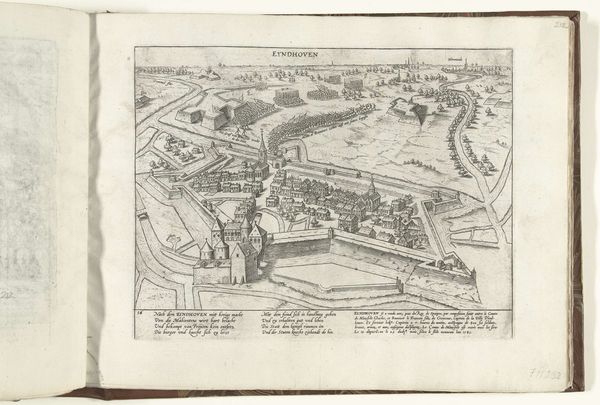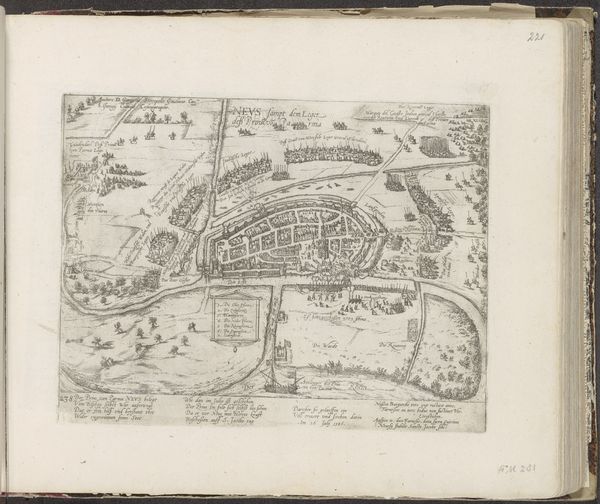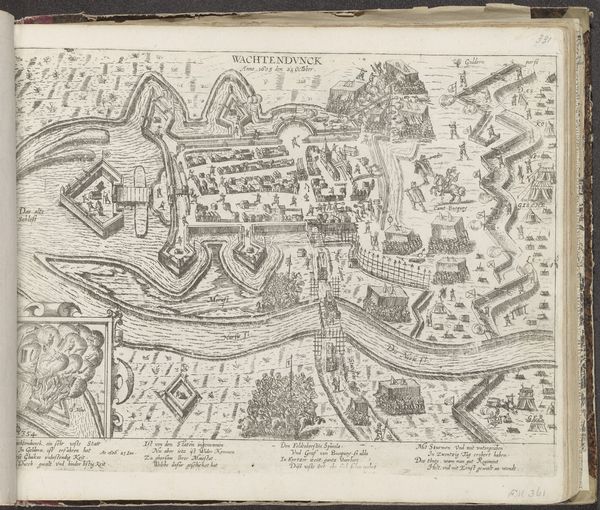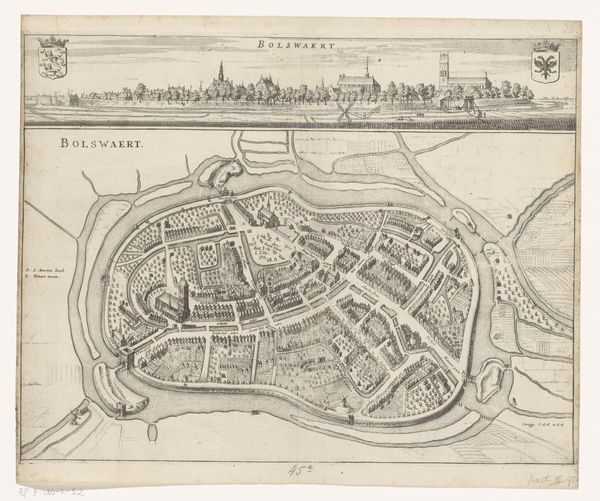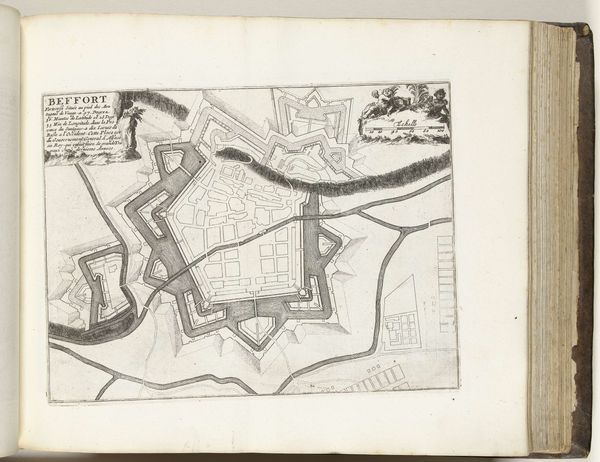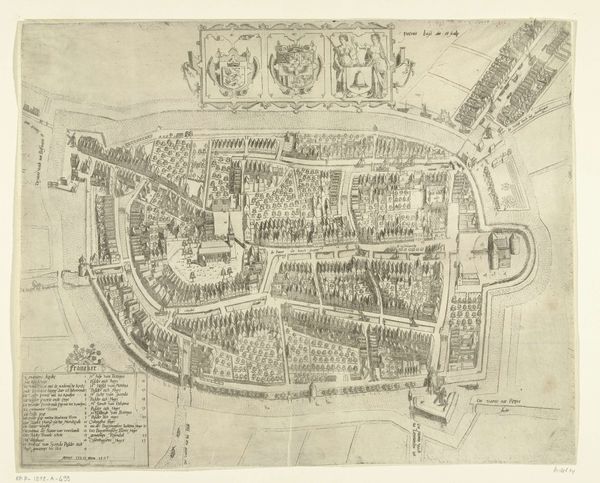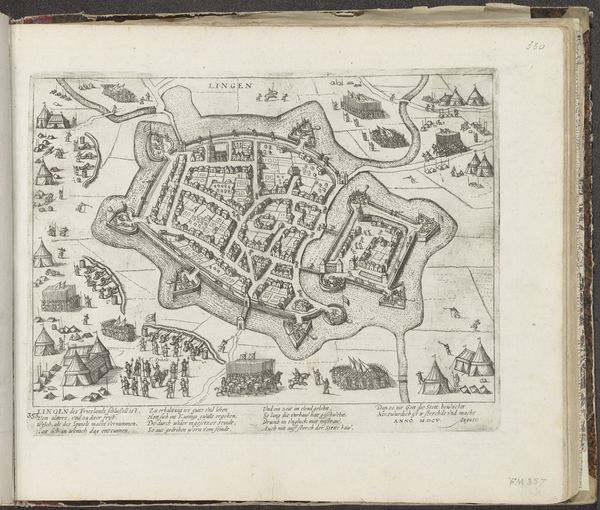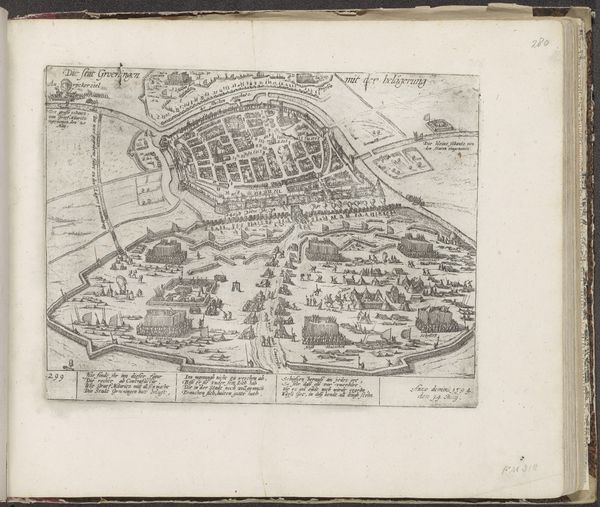
Dimensions: height 210 mm, width 280 mm
Copyright: Rijks Museum: Open Domain
Curator: Immediately, it strikes me as a vision of controlled chaos, wouldn't you agree? The intricate network of lines, each precise yet teeming with life, somehow pulls me into the heart of that city. It feels… expansive, historical, and a bit melancholic, like a faded memory carefully etched in ink. Editor: That melancholy may come from seeing urban planning depicted so…starkly. It's not romantic. This print, likely an engraving or etching done in ink, part of a series between 1588 and 1590 by Frans Hogenberg titled "Ontzet van Bonn na een beleg van 9 maanden, 1588", depicts the relief of Bonn after a nine-month siege. And looking at it, the sieges feel palpable. The materiality highlights military pragmatism and control more than artistic romanticism, really showing what the city meant materially to the people. Curator: Absolutely! The city looks as if you were watching from far away, the river snaking through the composition, adding this feeling of a journey. Knowing its historical context, and just imagine the countless hands involved in its creation: the artisans preparing the copper plates, the printers carefully inking and pressing each sheet... the distribution channels and the merchants selling this object. Editor: Exactly! Hogenberg clearly chose printmaking not only for replicability, allowing the images and story to spread, but also for its unique ability to communicate specific details of this space. Consider what each copy meant for information distribution, each unit being produced through extensive labor—it's a history made available to anyone to examine and keep in their private spaces. Curator: So, in a way, this work transcends its functional origins and invites you to inhabit a shared experience. We can all see our place inside, the lines weaving a collective human tale and a silent memorial to a bygone era. It is more than a map but more than pure historical storytelling: its a vessel, a portal into the collective experience. Editor: It’s a fascinating idea. Thinking about the ink on paper, how the print circulated and aged... each has its own microhistory, traces of handling, and the different uses that each version had.
Comments
No comments
Be the first to comment and join the conversation on the ultimate creative platform.
